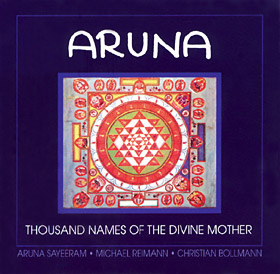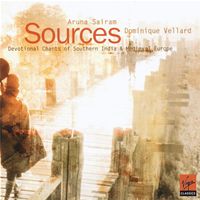Western Colours
-
by M.V. Ramakrishnan
“Aruna’s true achievement was to preserve the authentic character and mystic spirit of both traditions equally well, while letting them also crystallise into a common idiom which was saturated with Bhakti. In this sense, the whole exercise was, in my opinion, a case of spiritual transfusion, rather than mere ‘fusion’.”
That’s how I had summed up my impressions of Aruna Sairam’s presentation of the intriguing similarity between the melodic patterns of Carnatic music and those of the medieval West European musical tradition of Gregorian chants, in an article (FR, July 13). (http://www.thehindu.com/opinion/columns/m_v_ramakrishnan/article3631329.ece).
There were certain other important elements and aspects of the concert under review, which I had intended to discuss subsequently. But as things turned out actually, in the next article I was tempted to recall several significant comments I had made in this column during the past several years about the ongoing trends of alien connections of Carnatic musicians. This substantial set of quotations couldn’t be accommodated in the Friday Review for want of space, but it was published in the Online edition on August 3. (http://www.thehindu.com/arts/music/article3722296.ece)
I had concluded the article with the following observation: “In such an extremely intricate scenario, it must have taken great courage of conviction for Aruna Sairam to give us such a transparent view of her experiment, right here in the Mecca of Carnatic music. I do find her mystic vision of ‘fusion’ truly admirable, and I hope I have the proper credentials for saying so!”
Moderation and integrity
Now, let me resume my comments on the concert under review: The couple of Gregorian chants which Aruna rendered in Latin and archaic Italian -- and the corresponding Sanskrit sloka and Tamil song -- were only a small segment of the 90-minutes-long performance, which included several songs in Sanskrit, Tamil, Marathi and Bengali (Dikshitar’s ‘Hiranmayeem’ in Lalitha; Mysore Vasudevachar’s ‘Maamava Saraswati’ in Hindolam; Papanasam Sivan’s ‘Naanoru Vilayaattu Bommaiya?’ in Navarasa Kannada; Subramania Bharati’s ‘Chinnanchiru Kiliye’ in Ragamalika; the abhang ‘Bhakta Jana Vatsale’; and the Durga song ‘Jaago Tumi Jaago’).
The underlying theme of the concert was the Divine Mother, and quite appropriately the performance began and ended with a short but soulful recitation of selected names of the Supreme Goddess figuring in Lalitha Sahasranaama Stotram. On the Gregorian Chant side, this was matched by the two odes to the Virgin Mary.
Some of these songs were rendered with a Westernised touch, with subtle undertones of church music and jazz, produced by organ-like effects on the keyboard, and by acoustic/bass guitars and Western drums. But this never took away the authentic Indian flavour of the music, because it was all accomplished with extreme moderation and sensitive aesthetic perception.
The accompanists were Embar Kannan on the violin and Patri Satishkumar on the mridangam, and a set of bright youngsters belonging to the enterprising band, Oxygen.
What strikes one most forcefully is the absolute integrity which characterises Aruna Sairam’s music even in her highly innovative ventures. In the concert under review, the subtle Western colours she introduced just looked like some exotic flowers grown in her own beautiful Indian garden!
Related Albums

Trialogue
Published : 2012
By : Glossa Music
Aruna - Thousand Names...
Published : 1995
By : Lichthaus Music...
Sources
Published : 2000
By : EMI Records / Virgin Classics - France
Related Concerts
- Sammohanam - A celebration of Music and Dance 2017
On : Sunday, February 19, 2017 - 'ANANDA .....state of bliss.'
On : Saturday, March 2, 2019 - HEAVEN & EARTH 2018
On : Wednesday, February 7, 2018 - Ojai Music Festival 2017
On : Sunday, June 11, 2017
